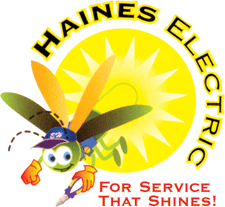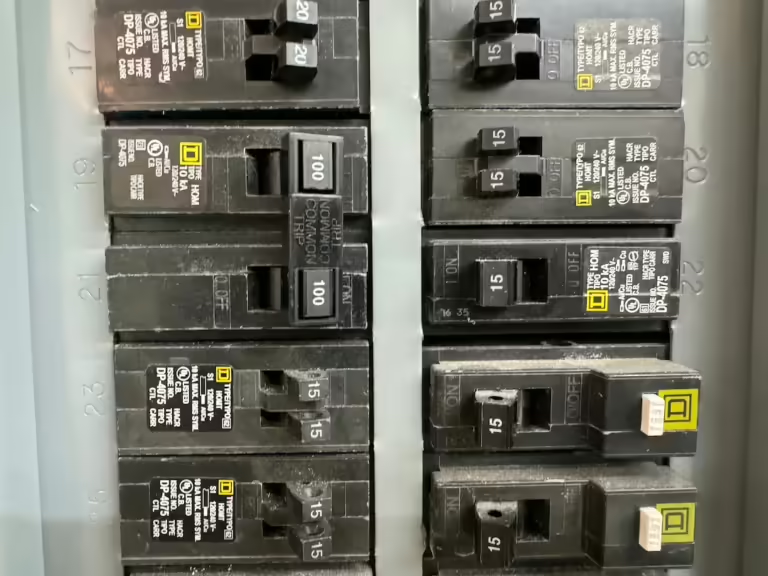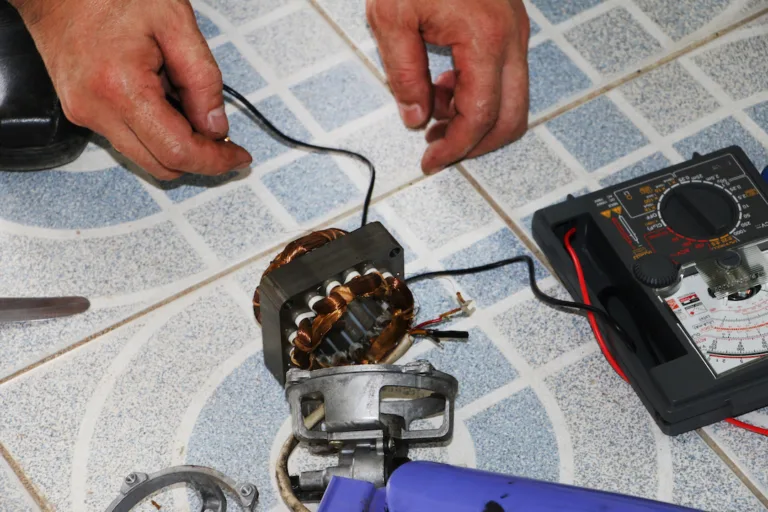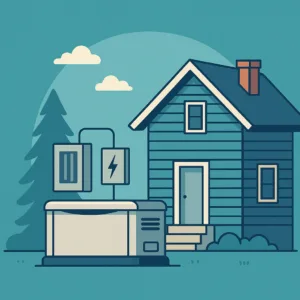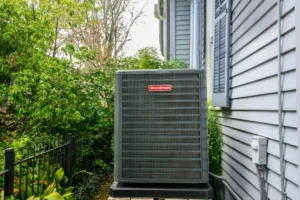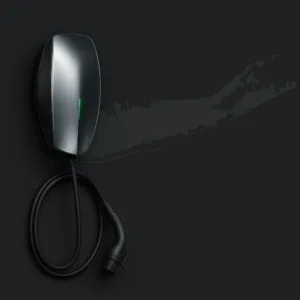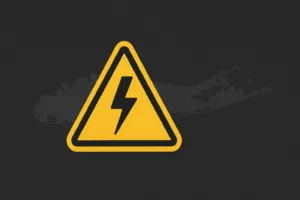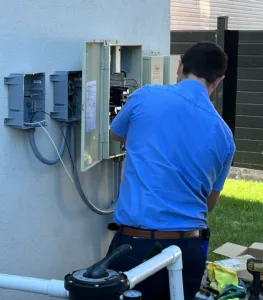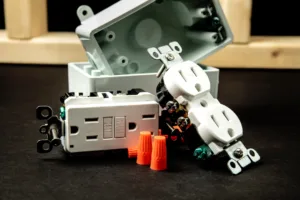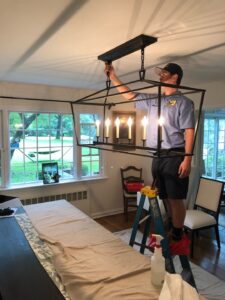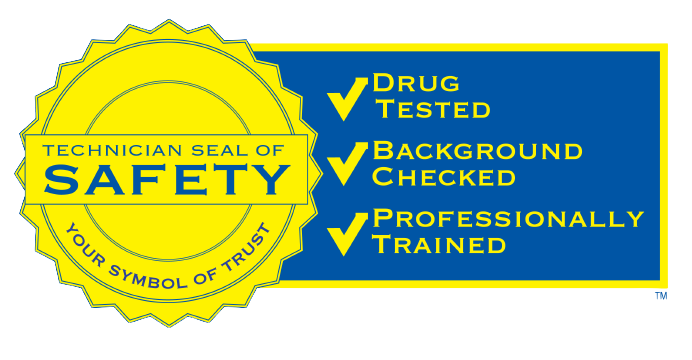Welcome to our latest resource, The Basics of Home Electricity. As licensed electricians in Long Island, we’ve often encountered homeowners curious about their home electrical system’s inner workings. Understanding home electricity basics is not just to satisfy curiosity – it’s also about enhancing safety and making informed decisions about electrical upgrades and repairs. So, let’s dive into the fundamentals.
What Is Electricity?
Electricity is something we use every day, but what exactly is it? Let’s break it down in a way that’s easy to understand.
The Science Behind Electricity
At its core, electricity is all about the movement of tiny particles called electrons. You can think of electrons as super energetic little balls that bounce around inside atoms, which are the building blocks of everything around us.
When these electrons move from one place to another, they create what we call an electric current. This electric current is what powers everything from your smartphone to your refrigerator.
How Electricity Powers Your Home

Now, how does this moving current of electrons power your home? It all starts at a power station, where electricity is generated. This electricity then travels over large distances through wires and cables, known as the power grid, until it reaches your home.
Power Generation


Understanding how power is generated and reaches our homes begins at the power station. But what happens within these power stations? although it may seem like magic, Haines Electric is here to break it down. Let’s explore this further.
Power stations, or power plants, are industrial facilities where electricity is generated. Various energy sources can fuel these power plants, and the type of energy source used often determines the method of electricity generation. Here are some popular sources of power:
Fossil Fuels
Fossil fuels – those ancient, buried treasures of coal, natural gas, and oil – are the seasoned veterans in the lineup of power generation. They’re the classic go-to sources that have been powering our lives for generations.
Coal, natural gas, and oil are commonly used in thermal power plants. In these plants, fossil fuels are burned to heat water. The steam from this heated water then spins a turbine connected to a generator, creating electricity.
Nuclear Energy
Nuclear power plants work similarly to thermal power plants, but they use nuclear fission instead of burning fossil fuels. In nuclear fission, atoms are split apart to create heat, which is used to generate steam that powers a turbine.
Hydropower
Hydropower plants use the energy from flowing or falling water to generate electricity. Typically, a dam is built to store water in a reservoir. When released, this water flows through a turbine, spinning it, which then drives a generator. These are especially popular in places like Canada!
Wind Energy
Wind energy converts the kinetic energy from the wind into electrical energy. Wind turbines catch the wind’s energy with their propeller-like blades, which are mounted on a rotor. When the wind blows, it turns the blades, which spin a shaft connected to a generator that produces electricity
The Grand Electrical Entrance
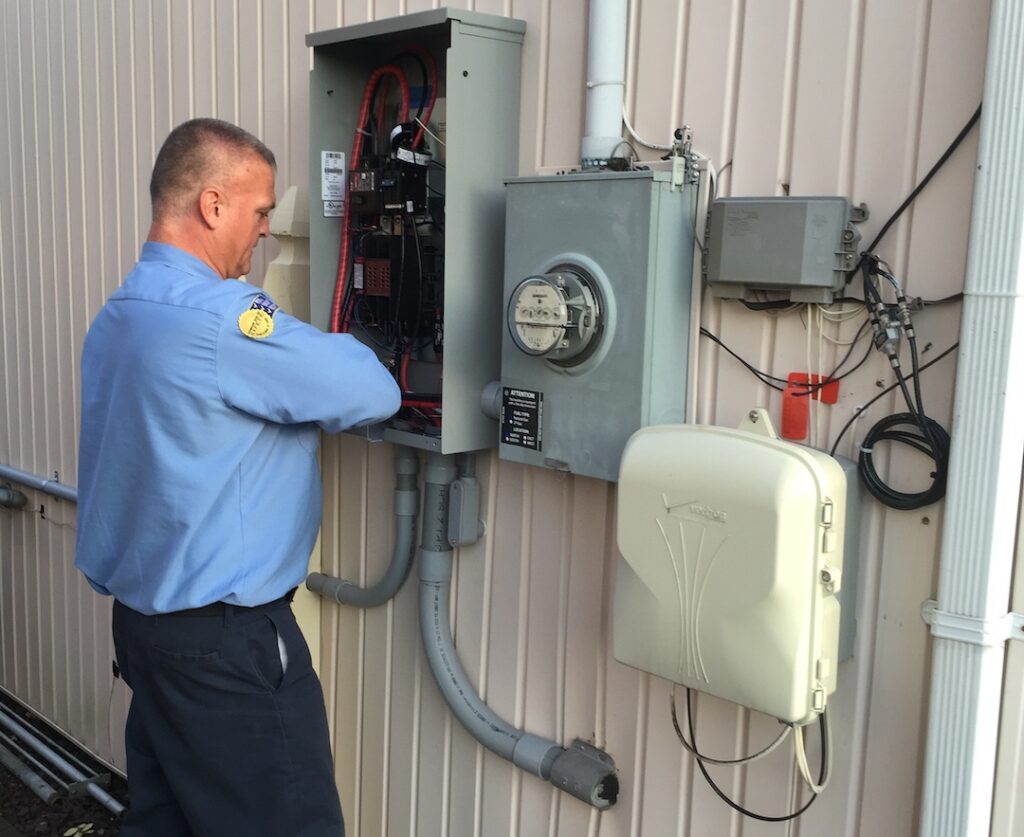 Once it gets to your home, the electricity enters through a main service panel (you might know it as your breaker box or fuse box).
Once it gets to your home, the electricity enters through a main service panel (you might know it as your breaker box or fuse box).
This panel divides the electricity into different paths, called circuits. Each circuit is designed to carry electricity to certain appliances and devices in your home.
Just like a system of highways connects cities and towns, these circuits connect your electrical service panel to your lights, appliances, and electronic devices, powering them with the electricity they need to work.
Components of The Home Electrical System
Haines Electric invites you to delve into the world of home electrical systems, where you can familiarize yourself with common terms, potential issues, and the overall infrastructure.
In this piece, our primary focus will be on how electricity makes its grand entrance into your home and its purpose once it’s there.
Electrical Service Panel
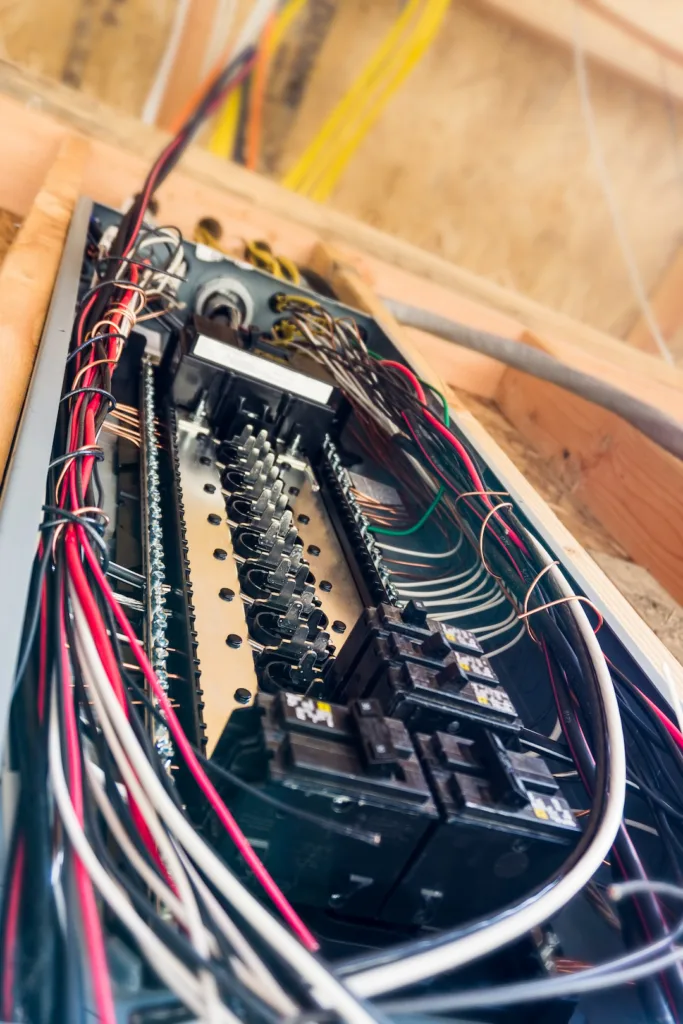
Often tucked away in a basement or garage, the electrical service panel may not be the most glamorous part of your home, but it is undeniably one of the most crucial. Frequently known as the breaker box or fuse box, this component is the central hub where electricity begins its journey throughout your home.
You can learn more details about electrical panels in our electrical panel safety resource.
Role and Function
The service panel functions much like a busy traffic control center, managing and directing the flow of electricity from the power grid into various subsidiary circuits within your home.
Picture it as a concert conductor, ensuring that the symphony of electrical power plays harmoniously and safely throughout all the rooms and appliances in your home.
Panel Components
Inside the service panel, you’ll find individual circuit breakers or fuses, each corresponding to a different area or appliance in your home. These circuit breakers play a crucial role in protecting your home. If there’s an overload or short circuit—meaning too much current is flowing through—they will ‘trip’ or ‘blow,’ effectively cutting off the electricity to prevent potential damage or fire.
While service panels are designed for durability, they aren’t immune to wear and tear. Outdated panels can pose safety risks, such as fire hazards or inconsistent power delivery. It’s crucial to have your panel inspected regularly by a professional electrician, who can assess its condition and perform any necessary upgrades or maintenance.
The electrical service panel is an integral part of your home’s infrastructure. While it might remain out of sight and out of mind for most homeowners, understanding its function and importance can help ensure the safe and efficient distribution of electricity throughout your home.
Circuit Breakers: Your Home's Electrical Bodyguards
Connected to your panel are circuit breakers and fuses. These are the unsung heroes of your home’s electrical system. Their primary function is to stand guard, vigilantly monitoring the flow of electricity and stepping in (or TRIPPING) to prevent any overloads that could pose a risk to your home’s safety!
If you’ve ever wondered why they trip check out our tripping breaker resource.
How They Work
Circuit breakers and fuses operate based on a simple but crucial principle. When the current flowing through them exceeds a predetermined safe level—known as the rated capacity—they spring into action
In the case of a circuit breaker, an internal switch will ‘trip,’ or flip to the off position, interrupting the flow of electricity. Think of it like a goalie blocking a shot to protect the net. Once the issue causing the overload is resolved, the breaker can be manually reset back to the ‘on’ position, restoring the flow of electricity
Their Role in Home Safety
By interrupting the flow of electricity during an overload or short circuit, circuit breakers and fuses play a pivotal role in preventing potential electrical fires. Overloads can cause wires to heat up, and if left unchecked, this could lead to a fire. Thus, these protective devices are essential for maintaining a safe home environment.
Regular Breaker Checks and Maintenance
It’s important to regularly check your circuit breakers and fuses to ensure they’re functioning correctly. If a breaker frequently trips or a fuse often blows, it may indicate a deeper issue within your electrical system that requires professional attention.
In conclusion, circuit breakers and fuses might be small components, but their role in safeguarding your home from electrical hazards is monumental. They’re the vigilant bodyguards, tirelessly protecting your home from the risk of electrical fires, ensuring peace of mind for you and your family.
Outlets and Switches: Your Home's Electrical Gateways and Power Controllers
If your home’s electrical system were an intricate highway, outlets and switches would be the on-ramps and traffic signals. They provide a seamless way for your electrical devices to hop onto the power expressway and manage the flow of electricity, ensuring a smooth and safe journey.
Outlets: The Power Connectors
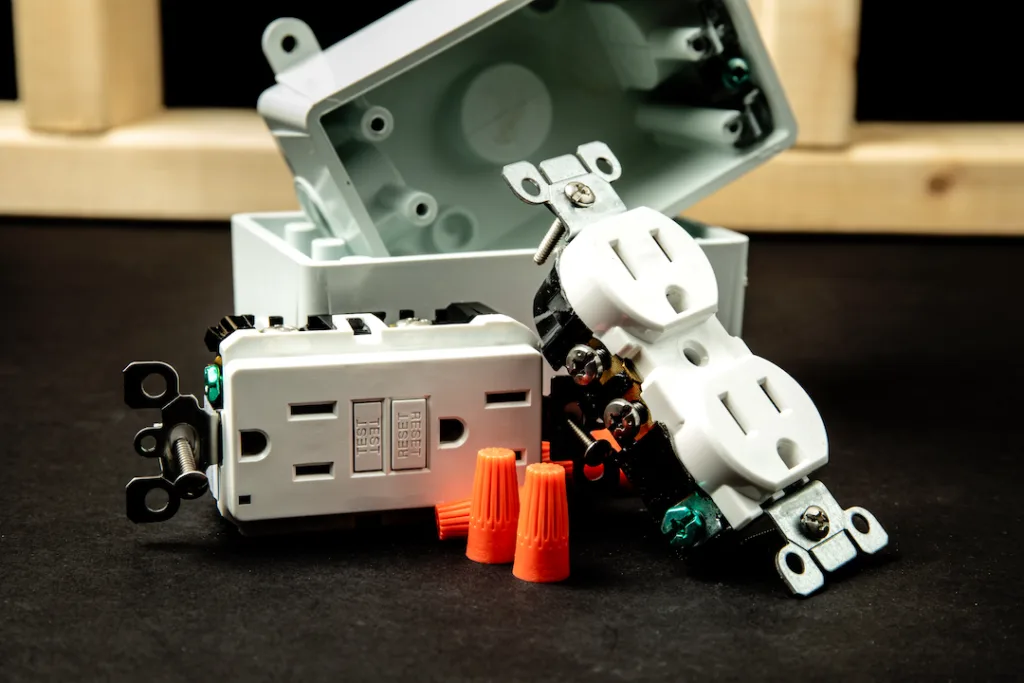
Outlets, also known as sockets or receptacles, are the gateways that allow your electrical appliances to tap into your home’s power supply. Think of them as welcoming docks where your devices come to refuel.
Whether it’s your refrigerator keeping your food fresh, your TV broadcasting your favorite show, or your laptop powering your work from home, outlets make all these possible by providing a connection point to the home’s electrical system.
Switches: The Power Managers
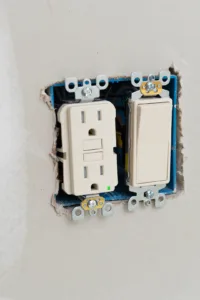 Switches, on the other hand, are like the traffic controllers of your electrical system. They regulate the flow of electricity to these outlets, giving you the power to control when and how your electrical devices operate.
Switches, on the other hand, are like the traffic controllers of your electrical system. They regulate the flow of electricity to these outlets, giving you the power to control when and how your electrical devices operate.
With a simple flip, you can bring a room to life with light, get the coffee brewing in the morning, or turn off everything when it’s time for bed. In essence, switches put you in command of your home’s electrical devices, allowing you to control their operation to suit your needs.
Safety and Efficiency
Outlets and switches are more than just convenience tools; they also play a significant role in ensuring electrical safety and efficiency in your home. Ground Fault Circuit Interrupter (GFCI) outlets, for instance, protect against electrical shock in wet areas like bathrooms and kitchens.
Switches, too, contribute to energy efficiency. By turning off lights and appliances when not in use, you can reduce energy consumption and save on your utility bills.
In conclusion, outlets and switches may seem like small, mundane parts of your home. Still, they serve critical roles in connecting your devices to power, controlling electricity flow, and contributing to a safe and energy-efficient home.
Common Home Electrical Terms Explained
Current
Imagine “current” as a bunch of tiny particles called electrons that love to zip around in wires. The more these electrons move, the more “current” we have. This movement is a bit like water flowing down a river – the bigger the river (or in our case, the wire), the more water (or electrons) can flow.
Now, what makes them move? That’s the job of “voltage.” It’s like a big push that gets the electrons going.
Voltage
In the book of common electrical terms, “Voltage” plays a pivotal role. It represents the ‘pressure’ that drives electric current through circuits, much like water pressure propels water through a hose.
Measured in volts (V), this force determines the flow of current and the power behind our electrical devices. Each device requires a specific voltage to operate efficiently, and any deviation – too high or too low – can affect performance or even cause damage. Hence, voltage regulation becomes crucial, ensuring an ideal and consistent flow of electricity for the safe operation of our devices.
But there’s also something called “resistance” that tries to slow down our electron friends.
Resistance
You can think of “resistance” as the grumpy troll in our electrical story. This troll doesn’t like our electron friends moving around so much. So, it tries to slow them down or even stop them from moving at all. Resistance is measured in something called ohms (Ω), and the more ohms, the bigger and grumpier our troll gets!
In other words, resistance is like a big roadblock on our electrons’ journey. But don’t worry, we need this grumpy troll. Without it, our electrons would move too fast, causing our gadgets to overheat or even break. So, while it might be a bit of a party pooper, resistance is super important in making sure everything runs smoothly and safely in our electrical devices!
AC vs. DC Power
Alternating current (AC) is the type of electricity supplied to homes by the power grid, alternating direction periodically. Direct current (DC), on the other hand, flows in one direction and is typically used by batteries.
Electrical Safety Tips
Before we dive into our section on electrical safety, it’s crucial to remember that electricity, while an essential part of our lives, needs to be handled with care.
From the gadgets we use daily to the lights on the long beach boardwalk, electricity is everywhere. But if not treated responsibly, it can pose a risk. That’s why we’ve put together this handy guide filled with tips and advice to help you stay safe around electricity at home
Smart Moves for a Safer Home
We all love our gadgets, don’t we? But it’s important to remember that electricity, while useful, needs to be treated with respect. Here are some tips to keep you and your loved ones safe:
- Don't turn your outlets into a crowded party of plugs. Overloading them can lead to overheating and even fires.
- Water and electricity? Not the best mix. Keep them apart to avoid shocks or damage to your devices.
- Your electrical system is not a DIY project. Leave it alone and let the pros handle any changes or fixes.
- Be a detective in your own home. Keep an eye out for signs of electrical trouble like flickering lights or breakers that keep tripping.
Knowing When to Dial the Pros
At Haines Electric, we know it’s important to know a bit about how electricity works, but there are times when you need to call in the experts.
- If you need repairs or brand new installations, it's always safer to get a licensed electrician to do the job.
- Got a complicated electrical problem? Don't play guessing games. An expert will have the right tools and knowledge to solve it safely and efficiently.
Remember, safety always comes first! So, don’t hesitate to call a professional when dealing with electricity.
Located In Nassau County NY? We're Here To Help
For those residing in Nassau County, you’re in luck. Haines Electric offers top-notch professional electrical services right at your doorstep. With over 40 years of experience, our team of licensed electricians has the expertise and experience to identify and resolve any electrical issues you may be facing. We are committed to providing safe, efficient, and reliable solutions to keep your home powered up and protected.
Energy Efficiency in Home Electricity
We all know that electricity is a vital part of our daily lives. But with rising energy costs and the growing concern for our planet, it’s more important than ever to be mindful of our consumption. In this section, we’re going to explore how you can make your home more energy-efficient, saving both your wallet and the environment. From selecting the right appliances to adopting small energy-saving habits, we’ll walk you through some practical steps towards a greener, more sustainable household. So, are you ready to become an energy-saving superstar? Let’s get started!
Simple Habits for Reducing Electrical Consumption
The truth is, no one expects you to go off the grid or not enjoy modern amenities. Haines Electric believes that with small changes, you can save money and the planet too!
- Switch Off Lights: Make it a habit to turn off lights as soon as you leave a room. This simple action can save a surprising amount of energy over time.
- Unplug Idle Appliances: Many appliances consume energy even when they're not actively in use, a phenomenon known as 'phantom load'. Unplug your devices when they're not in use to avoid this unnecessary power drain.
- Maximize Natural Light: Open those curtains and let the sunshine in! Utilizing natural light not only reduces the need for artificial lighting but also helps create a warm and inviting atmosphere in your home.
- Invest in a Programmable Thermostat: These handy devices allow you to automate your home's heating and cooling system. You can set it to adjust the temperature when you're away or asleep, leading to significant energy savings without compromising on comfort.
- Use Energy-Efficient Light Bulbs: Consider replacing traditional incandescent bulbs with energy-efficient alternatives like LEDs or CFLs. They consume less energy and last much longer, making them a cost-effective and eco-friendly choice.
- Regular Maintenance: Keep your appliances in top shape by regularly cleaning and maintaining them. Well-maintained appliances run more efficiently, saving you energy and extending their lifespan.
- Insulate Your Home: Proper insulation can keep your home warm in the winter and cool in the summer, reducing the need for artificial heating and cooling.
Energy-Saving Appliances and Lighting
Using energy-efficient appliances and lighting fixtures can significantly reduce your electricity consumption and contribute to a more sustainable environment.
Look for products with an Energy Star label, indicating they meet or exceed energy efficiency standards.
In Conclusion, Knowledge Is Power!
Understanding the basics of electricity in your home is not only empowering, but it’s also a fundamental step towards safer and more efficient energy use. From knowing how to reset a tripped circuit breaker, to understanding the role of different electrical components, these basics can help you maintain a safe and well-functioning home.
Remember, while minor troubleshooting can be done by homeowners, always call a professional electrician for major repairs or installations to ensure safety.
Keep exploring, keep learning, and remember – every bit of knowledge makes you a more informed and responsible homeowner. Thank you for taking the time to read this guide, and here’s to your empowered journey in managing your home’s electrical system!
